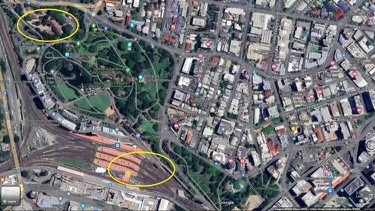Brisbane Arena’s $1bn Olympics fail
Economic modelling of the Brisbane Arena Olympics project found it would not even reach the halfway point of breaking even, intensifying doubt over a second key 2032 Games build.

Economic modelling of the planned Brisbane Arena Olympics project found the showpiece venue would cost nearly $1bn more than the income and benefits it generated, intensifying doubt over a second key 2032 Games build.
The analysis for the Queensland government showed the 17,000-seat auditorium did not even reach the halfway point of breaking even.
The full findings have been kept under wraps since 2018, when the capital cost was projected to be $1.286bn. This was about half what Anthony Albanese committed last year under a cost-sharing deal with the state to fund Games venues.
However, civil construction firms and potential contractors consulted by the Queensland government have since warned that the capped $2.5bn allocation from Canberra might not be enough to realise the ambitious plan to position the hall above Roma St railway station in the CBD. Brisbane Arena is to host Olympic swimming events in a drop-in pool.

This comes on top of Olympics powerbroker John Coates pulling his support for the $2.7bn rebuild of the Gabba stadium, where the athletics and the Games’ opening and closing ceremonies would be held under current planning.
Former Brisbane mayor Graham Quirk is reviewing the projects amid indications Premier Steven Miles has cooled on them since taking over from Annastacia Palaszczuk eight weeks ago.
Mr Quirk, an LNP stalwart, has declined to comment on Mr Coates’s intervention.
The cost-benefit analysis of Brisbane Arena, obtained by The Weekend Australian, found that the project had “net present value” of minus $964m as of October 2018, when the evaluation was forwarded to state agency Building Queensland.

This equated to a cost-benefit ratio of 0.36, meaning the economic reward in terms of income and savings such as reduced travel time for patrons of the existing Brisbane Entertainment Centre at Boondall in the city’s north did not offset the upfront capital costs.
Cost-benefit studies generally need to return a finding of 1 or above to be positive.
In addition to the $1.286bn capital outlay, operating and lifecycle costs for Brisbane Arena were put at $227m. On the plus side, operating revenue was calculated at $219m and travel time savings at $90m. The consumer surplus – the difference between what people are prepared to pay and the amount actually spent – added a further $184m, while flow-on benefits to Brisbane-based industries was $56m. This still left the shortfall of $964m.
The Queensland government would have carriage of delivering the project and absorb overruns on the $2.5bn budget, but Mr Miles signalled concern over the build in December by ordering his then department of state development to explore alternative sites.
The 2018 cost-benefit analysis is believed to be the only substantive economic modelling of the project, and it relied heavily on information provided by proponent Harvey Lister, the boss of stadium and venue operator ASM Global, who came up with the concept.
Asked if the study had been forwarded to Mr Quirk, the Department of State Development, Infrastructure, Local Government and Planning said: “In line with the terms of reference for the 60-day independent review, the reviewers are being provided with all relevant information to conduct the review into the sports venues for the Brisbane 2032 Games.”
In a text, Mr Lister said: “We have declined to provide a quote for this article as it would be unhelpful of us to offer any views publicly whilst the government-appointed review committee is undertaking its work.”

Market soundings on Brisbane Arena undertaken by the state government last year exposed concern among potential contractors that $2.5bn would not be enough to get the job done if Roma St station was to stay operational during construction.
The possibility that the elevated deck would be classified as a railway tunnel, requiring enhanced safety and engineering features, could also increase capital costs, the companies said.
Separately, a confidential submission to state government by the Australian Constructors Association last November said Queensland’s $89bn “Big Build” infrastructure program was already pushing up against workforce and supply chain constraints.
Mr Quirk will assess whether the Brisbane Arena project should be moved to one of two sites identified by state government, a 7ha industrial lot in inner-city West End acquired from Visy Industries in 2022 for $165m or state land on the opposite side of the Roma Street Parklands to the train station.






To join the conversation, please log in. Don't have an account? Register
Join the conversation, you are commenting as Logout